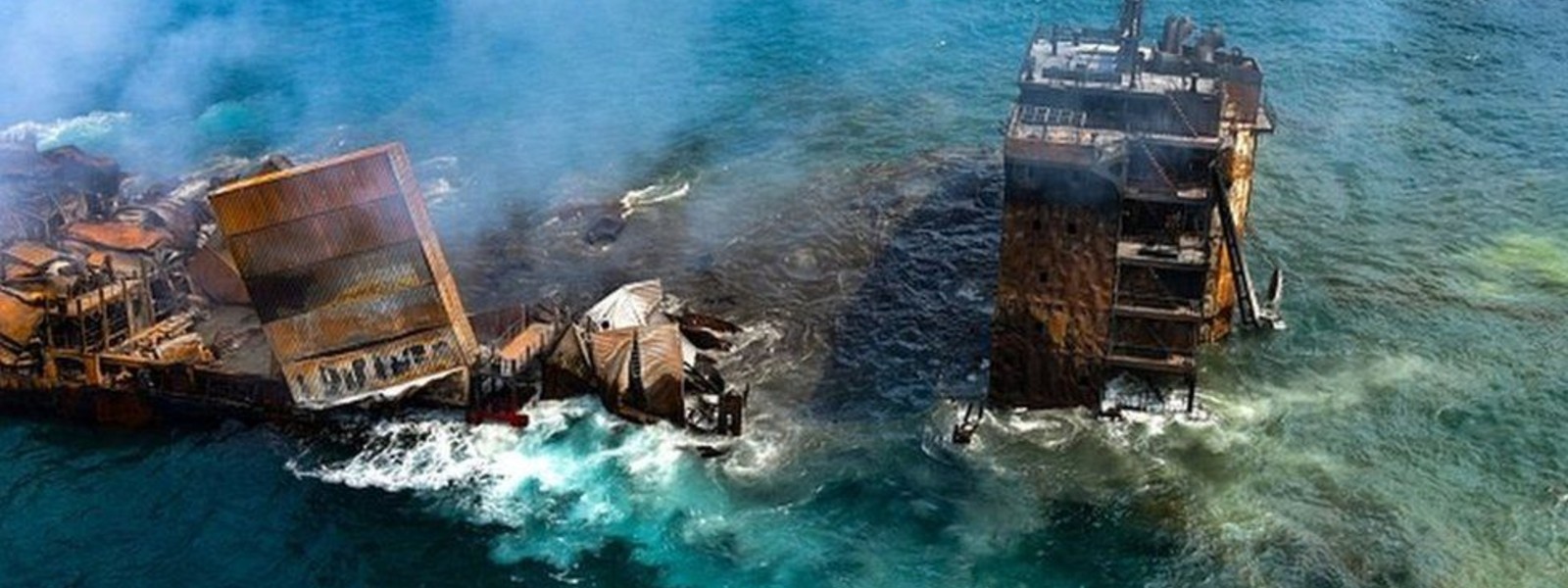.webp)

X-Press Pearl : Debris removal commences
COLOMBO (News 1st); A salvage operation in underway to remove the X-Press Pearl wreck and the debris that settled in the ocean floor, said Sri Lanka's Marine Environment Protection Authority.
Florida-based salvor Resolve Marine has mapped out the debris spread and has identified 180 target locations, from where the debris will be removed.
According to MEPA, the debris will be brought ashore and will be moved to a temporary facility in Wattala.
The debris removal process will be monitored 24/7 by MEPA officials from the MMA Prestige vessel.
Shanghai Salvage, a division of China's Ministry of Transport, won the contract to remove the wreck of the sunken container ship X-Press Pearl from waters off the coast of Sri Lanka.
The Singapore-flagged vessel first reported smoke in a cargo hold after arriving at a Colombo anchorage on May 20th with 1486 containers, including 81 Dangerous Goods Containers and 25 tonnes of Nitric Acid.
Despite firefighting efforts, the fire spread and set off a series of explosions that resulted in the entire vessel being engulfed by flames. Despite best efforts to save the ship, the X-Press Pearl eventually started taking on water and sank as salvors were attempting to tow it to deeper waters. As of early June, the ships aft portion was sitting on the seabed at a depth of about 21 meters while the forward area remained partially afloat.
Although the ship’s operator has reported that no noticeable fuel oil has spilled from the vessel, chemicals and small plastic pellets have been released into the environment and spread to nearby beaches and fishing grounds.
In the aftermath of the fire, it was revealed that a container with nitric acid was discovered to be leaking prior to the ship’s arrival in Sri Lanka. While the X-Press Pearl called Hamad Port in Qatar and Hazira Port in India for discharge and loading operations, they were unable to offload the leaking container as the ports lacked the facilities and expertise to handle the cargo.
The ship was also reported to be carrying 297 tonnes of Heavy Fuel Oil and 51 tonnes of Marine Fuel Oil.
Other Articles
Featured News





.png )
-820382_550x300.jpg)
-820376_550x300.jpg)

-820364_550x300.jpg)






-819380_550x300.jpg)


-812087_550x300.jpg)
-810262_550x300.jpg)
















.gif)